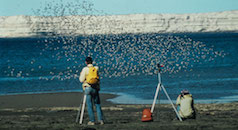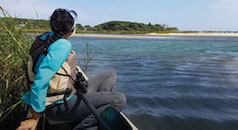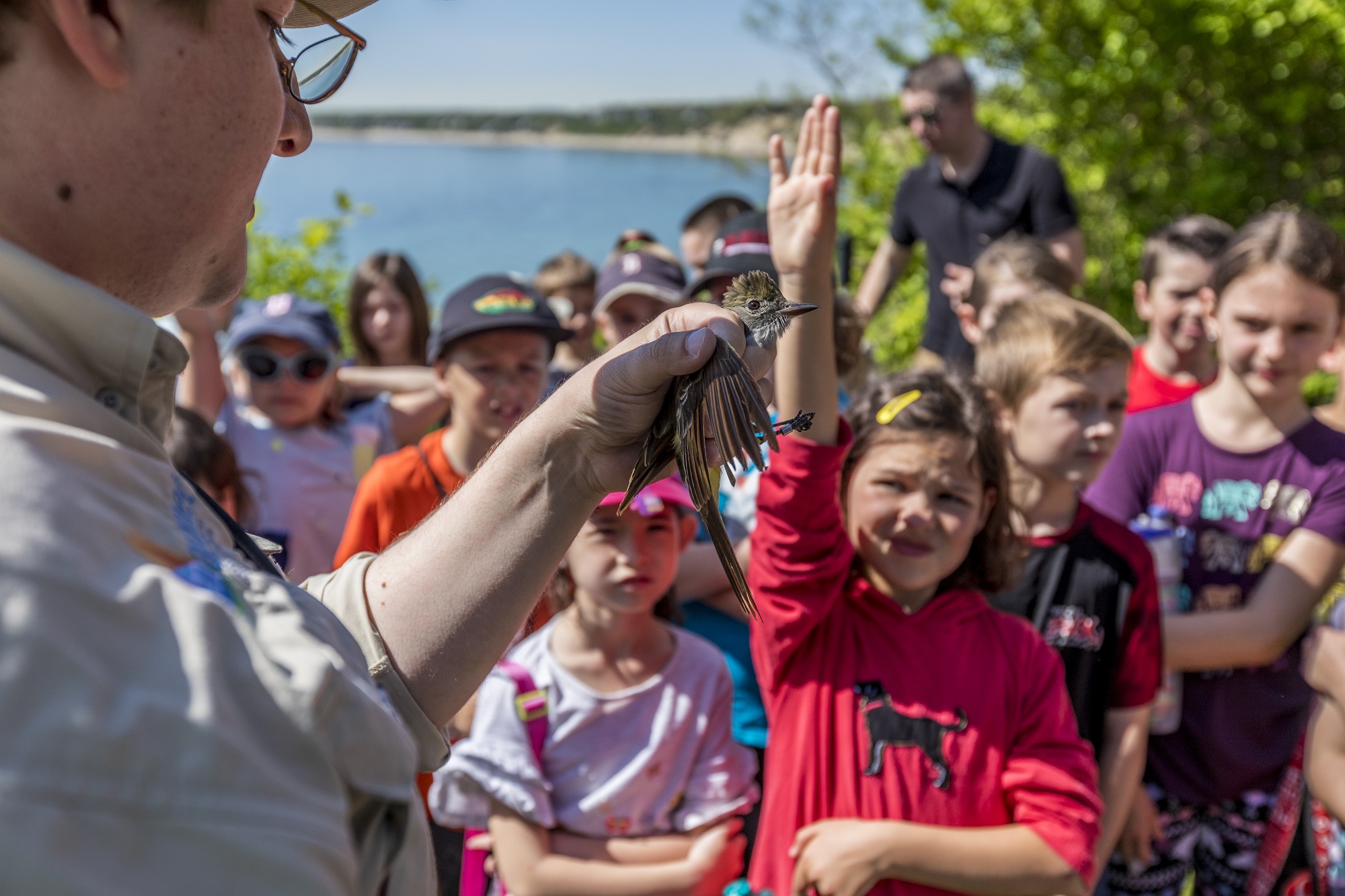The celebrated Red Knot shorebird B95 – named for the band attached to his upper left leg – has astonished the conservation world yet again by being seen in Tierra del Fuego, Argentina.
On December 6, this iconic rufa Red Knot was seen and photographed by Allan Baker, Patricia González and Luís Benegas in Rio Grande, just a few miles from where he was first banded on February 20, 1995. B95 is now at least 20 years old, making him the oldest Red Knot on record.
B95 is one of thousands of Red Knots who make the annual migration from breeding grounds in the Canadian Arctic to Tierra del Fuego – a one-way trip of nearly 10,000 miles.
The three scientists who were lucky enough to catch a glimpse of B95 earlier this month have close relationships with this remarkable 10-ounce shorebird. Baker led the Canadian research team that first banded B95 with a black band on his lower right leg in Rio Grande almost two decades ago. González was the one to give him his famous orange B95 flag in November 2001, when he was caught for the second time six years later.
In his lifetime, B95 has flown the equivalent of the distance between the earth and the moon and at least halfway back, earning him the nickname “Moonbird.” In 2012, the bird was even featured in a critically-acclaimed book by author Phil Hoose titled “Moonbird: A Year on the Wind with the Great Survivor B95.”
B95 has been caught a total of four times and sighted on many other occasions. He was spotted in mid-May of this year on the shores of Delaware Bay and was seen in August at Canada’s Mingan Archipelago by Yann Rochepault.
Scientists estimate that when B95 was first banded in 1995, there were more than 150,000 rufa Red Knots in existence. That population has declined precipitously, dropping by about 80 percent.
Research has shown that one of the primary threats to the rufa Red Knot is the overfishing of horseshoe crabs and the resulting scarcity of their eggs at Delaware Bay. A depleted supply of horseshoe crab eggs makes it difficult for Red Knots to put on enough weight during their spring migration stopover at the Bay to make it to the Arctic and breed successfully.
In an interview with El Dínamo, Southern Cone Coordinator for Manomet’s Shorebird Recovery Project Diego Luna Quevedo said B95’s enduring story gives conservationists hope.
“While populations of many shorebird species, including the Red Knot, have suffered severe declines in recent decades, B95’s story excites us and inspires us to redouble our conservation efforts on a hemispheric scale,” Luna Quevedo said. “Far beyond science, we are human beings who have much to learn from this wonderful bird and his story of survival.”
To learn more about these incredible shorebirds and what you can do to help conserve their populations, visit http://moonbirdfund.org/.
– Haley Jordan
Photo Credit: Allan Baker





 Back to all
Back to all